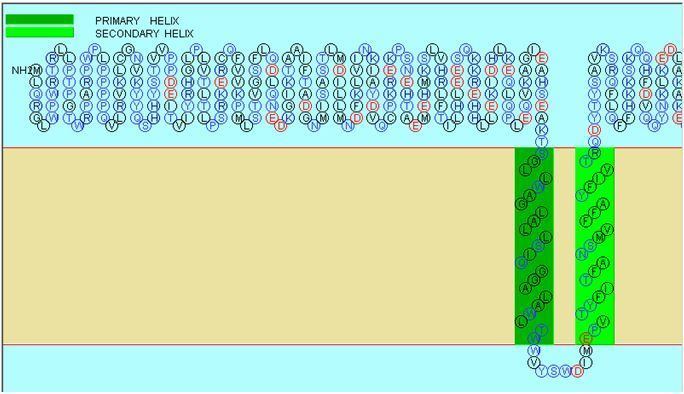Species Human Entrez 55013 | Human Mouse Ensembl ENSG00000005059 | |
 | ||
Aliases MCUB, EMRE, MCUb, CCDC109B, Ccdc109b, coiled-coil domain containing 109B, mitochondrial calcium uniporter dominant negative beta subunit External IDs MGI: 1914065 HomoloGene: 23056 GeneCards: MCUB | ||
Coiled-coil domain containing 109B (CCDC109B) is a potential calcium uniporter protein found in the membrane of human cells and is encoded by the CCDC109B gene. While CCDC109B is a transmembrane protein it is unclear if it is located within the cell membrane or mitochondrial membrane.
Contents
Gene information
CCDC109B is located at 4q25 and is 128,520 base pairs in length. CCDC109B contains eight exons and is located on the positive strand of chromosome four. CCDC109B has nine transcript variants due to alternative splicing. The unspliced version of this gene is the longest and most common variant found in human cells and is 1298 base pairs in length.
Protein information
When translated, the CCDC109B protein is composed of 336 amino acids and has a molecular weight of 39.1 kDa. The 3' end of this protein is highly conserved and contains domains crucial for protein function.
Protein domains
Phosphorylation sites
The CCDC109B protein contains several likely phosphorylation sites on serine, threonine, and tyrosine residues.
Sumoylation site
There is one likely sumoylation site within CCDC109B at amino acid residue 306, which is a lysine. This residue is highly conserved among orthologs.
Tertiary structure
Although it is known that CCDC109B is a transmembrane protein the proper folding of its N-terminus and C-terminus is unclear.
Homology
CCDC109B shows conservation in vertebrates, including mammals, birds, reptiles, and amphibians. There appears to be some conservation in earlier organisms such as flies, worms, and plants, but the percent identity is very low and these organisms have many orthologus structures that may not be CCDC109B. The orthologs found in non-vertebrate organisms may also actually be the paralog of CCDC109B which is still producing some identity to CCDC109B.
The table below shows CCDC109B conservation among vertebrate organisms:
Paralog of CCDC109B
CCDC109B has a single paralog in the human genome. This paralog is CCDC109A, which is more commonly known as Mitochondrial Calcium Uniporter (MCU) MCU is located in the inner membrane of the mitochondrion and is found as an oligomer that transports calcium ions into the mitochondria. MCU is an essential component of the mitochondrial membrane and sliencing MCU abolishes calcium uptake. The DIME motif, which is also conserved in CCDC109B, is responsible for calcium uptake and a mutation in this region inhibits this function. CCDC109B and MCU share a 43% identity in which the DIME motif is fully conserved.
Expression profile
CCDC109B is expressed at high levels in the immune system and the circulatory system. CCDC109B is expressed in B-cells, Dendritic Cells, T-Cells, and Natural Killer Cells. CCDC109B expression is not present in human adipose tissue, adrenal glands, bladder, bone marrow, ear, esophagus, larynx, parathyroid, pituitary gland, spleen, thryroid, trachea, or umbilical cord tissues.
Role in disease
CCDC109B may contribute to a number of diseases including various lymphomas and leukemias. Changes in CCDC109B expression are also present in other diseases such as glioblastomas, Daudi Burkitt's lymphoma, Duchenne muscular dystrophy, breast carcinomas, and promyelocytic leukemia HL-60. CCDC109B may also contribute to atopic dermatitis skin lesions and Job's Syndrome. However, the mechanisms behind the role of CCDC109B in these diseases are unclear and not well characterized through research.
Transcription factors
CCDC109B has a promoter region that contains sites for transcription factor binding. This promoter region is approximately 500 nucleotides long and is located just prior to the start of translation. Notable transcription factors that bind CCDC109B include:
Cellular proteins
CCDC109B interacts with ZBTB16, which is a zinc-finger transcription factor and has a probable role in protein degradation. CCDC109B's interaction with ZBTB16 was determined by a yeast two-hybrid screen It is still unclear how CCDC109B interacts with ZBTB16.
Other proteins that CCDC109B interact with are currently unknown.
